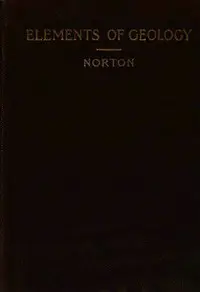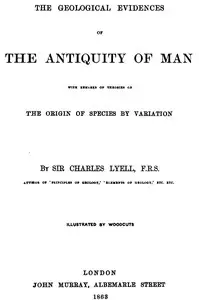"A Manual of Elementary Geology" by Charles Lyell, is a guide to grasp the core concepts of geology by unraveling the Earth’s historical transformations and its past inhabitants through the study of geological formations. Made for both students and enthusiasts, it aims to clarify how ordinary natural events have, over immense spans of time, molded the Earth’s structure. It begins by laying the conceptual groundwork for geology, clarifying its scientific scope, and categorizing rock types by their origins and age. Lyell clarifies the differences between sedimentary and igneous rocks, detailing their formation processes, unique features and highlighting the significance of fossils and layering in interpreting Earth's history and its life. In essence, the initial part of the manual prepares the reader for a structured journey into the geological principles and phenomena that Lyell intends to shed light on in the following sections.

A Manual of Elementary Geology or, The Ancient Changes of the Earth and its Inhabitants as Illustrated by Geological Monuments
By Charles Lyell
Journey through time to discover how rocks and fossils tell the story of our ever-changing planet.
Summary
About the AuthorSir Charles Lyell, 1st Baronet, was a Scottish geologist who demonstrated the power of known natural causes in explaining the earth's history. He is best known today for his association with Charles Darwin and as the author of Principles of Geology (1830–33), which presented to a wide public audience the idea that the earth was shaped by the same natural processes still in operation today, operating at similar intensities. The philosopher William Whewell dubbed this gradualistic view "uniformitarianism" and contrasted it with catastrophism, which had been championed by Georges Cuvier and was better accepted in Europe. The combination of evidence and eloquence in Principles convinced a wide range of readers of the significance of "deep time" for understanding the earth and environment.
Sir Charles Lyell, 1st Baronet, was a Scottish geologist who demonstrated the power of known natural causes in explaining the earth's history. He is best known today for his association with Charles Darwin and as the author of Principles of Geology (1830–33), which presented to a wide public audience the idea that the earth was shaped by the same natural processes still in operation today, operating at similar intensities. The philosopher William Whewell dubbed this gradualistic view "uniformitarianism" and contrasted it with catastrophism, which had been championed by Georges Cuvier and was better accepted in Europe. The combination of evidence and eloquence in Principles convinced a wide range of readers of the significance of "deep time" for understanding the earth and environment.















